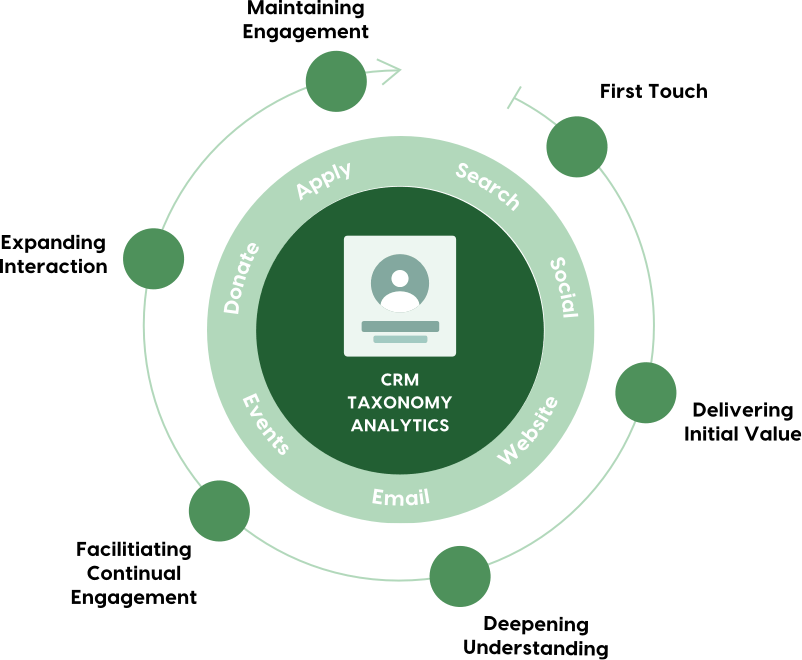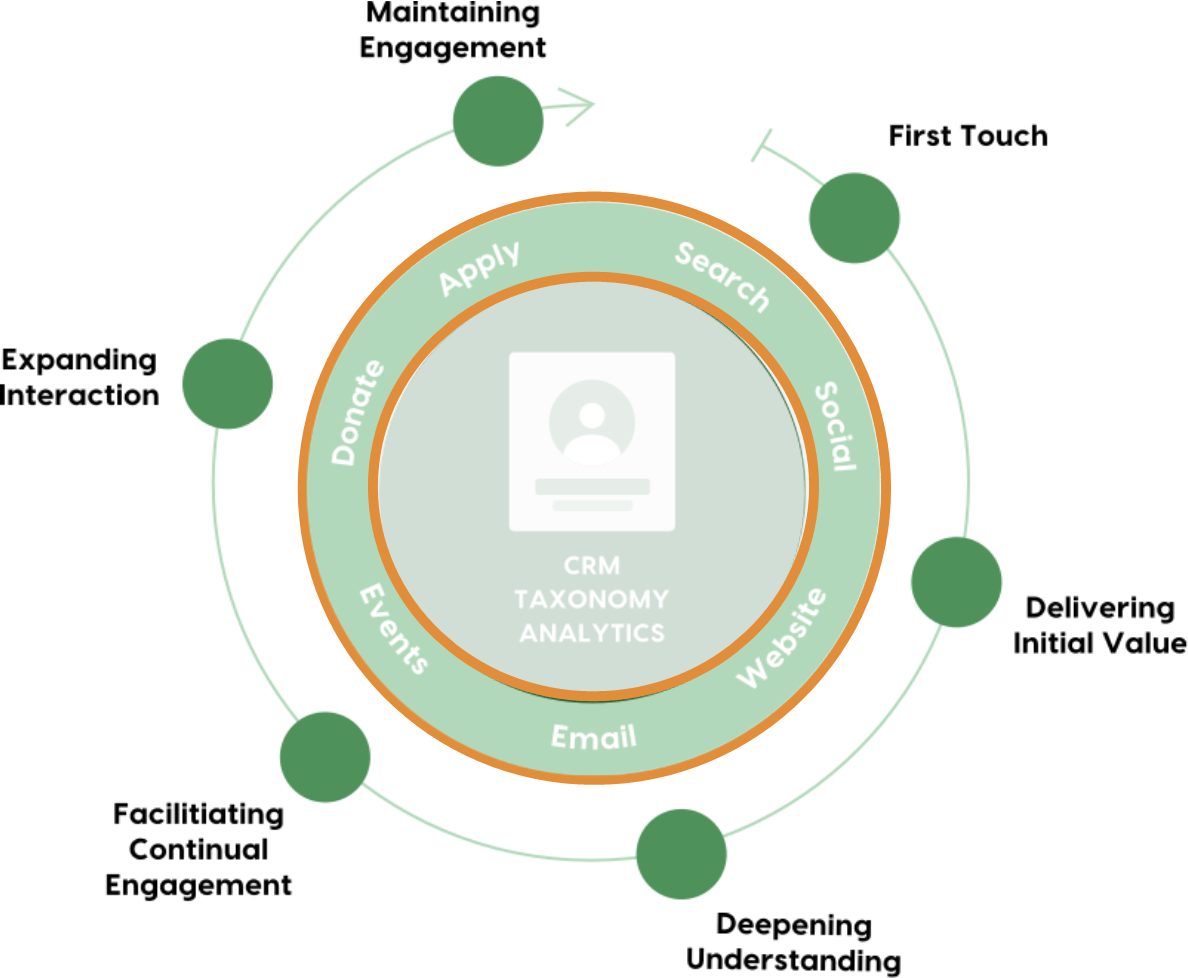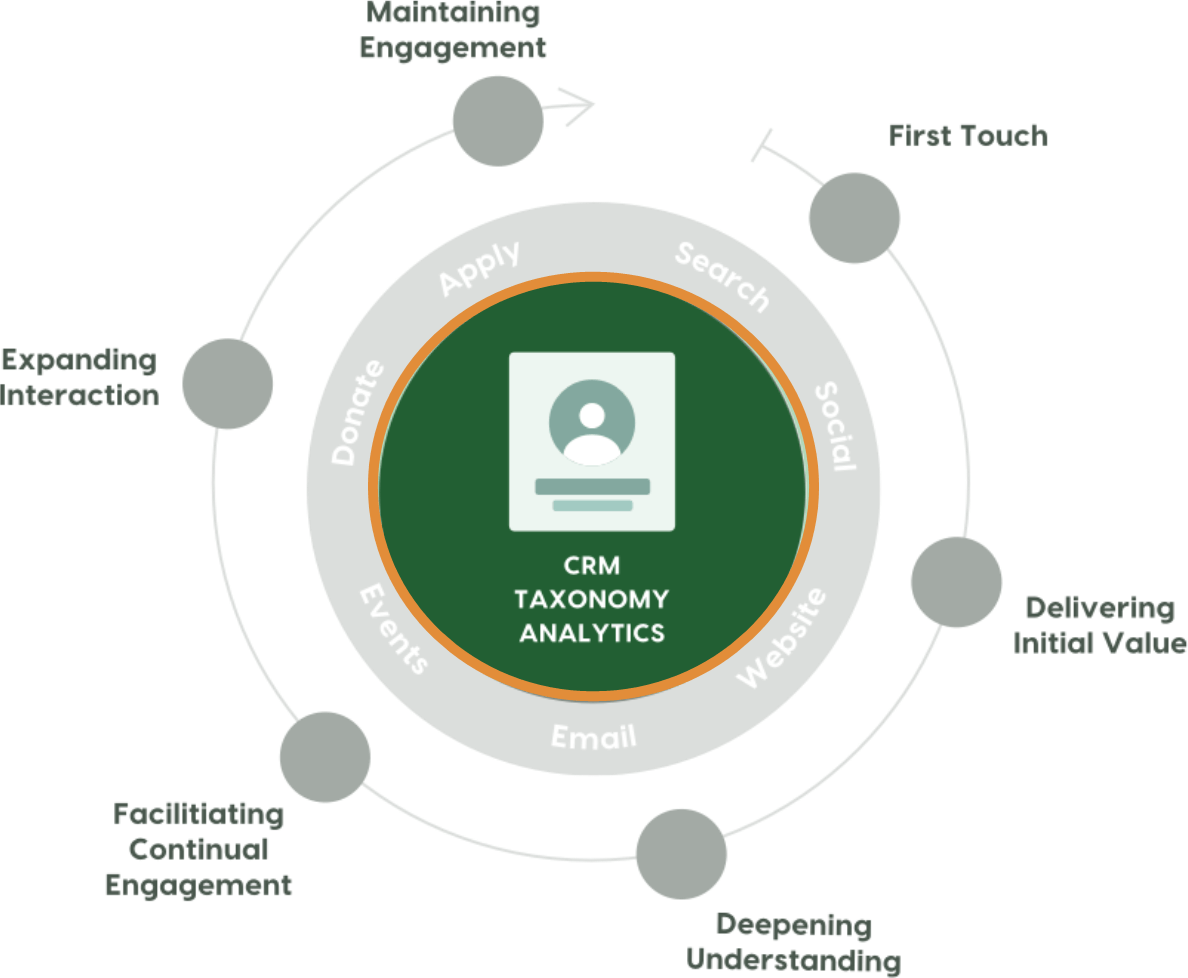If you’ve visited ParsonsTKO, you’ve probably seen Engagement Architecture mentioned frequently in our writing. It’s an approach we use across our work, it connects technology, internal processes, staff expertise, content, and outreach tactics into a holistic strategy for audience engagement. During a recent presentation, I shared the graphic below to illustrate the value of this approach, and I want to share the ideas behind it with you.

A common starting point
While very few organizations are trying to actively alienate or ignore their external audiences and key stakeholders, a surprising number are still indifferent to the experience these audiences receive. All this despite significant improvements in access to audience engagement tools and reduction in costs over the years. Far too often an expensive campaign is launched to attract new audience members or promote a new initiative only to find that of the initial audience reached, only a small proportion remain engaged six months later. Organizations focus too much of their effort getting noticed and not enough building deep relationships with those they reach.
The situation is often no better when it comes to day to day engagement. Organizations often have vibrant and engaged followers on social media who find themselves presented with either shallow surface level content or complex and difficult to consume research when they click on links in that social content. Audiences rarely get consistent and planned experiences across the various channels they encounter an organization.
Fortunately, even for organizations running tight budgets, it’s now possible to create planned experiences across all your audience touch points. These experiences can be tailored to a wide range of audience segments, and successful organizations are realizing that they need to abandon that old Henry Ford maxim of “You can have it in any color you want, as long as it’s black.” Successful organizations are engaging each audience segment at the right time with information that directly relates to their needs and preferences. Does your organization have a model for this kind of engagement? Are your systems, protocols and corporate culture aligned with maximizing your audience experience? Don’t feel bad if you said no, very few organizations have sorted this out.
At ParsonsTKO, our proprietary approach, called Engagement Architecture, addresses this common challenge. We start by helping clients understand how and what they want to communicate with their various constituencies. Working backward from this starting point, we collaboratively work to find the unique combination of tools, resources, processes and staff that will maintain effective, consistent engagement over time. While the ingredients vary organization to organization, the recipe for success is well established.

Engaging Stakeholders Strategically, from the First Touch
When an organization implements an Engagement Architecture, they are deploying a strategy for how to introduce the organization to those first encountering the organization, while developing and deepening relationships with existing audiences. It’s an intentional, systematic approach that nurtures your audience from passive content consumption into active engagement and contribution.
Given that every organization starts this process at a different place, we’ve developed a maturity model as well to guide organizations to the highest value with the most practical architecture that fits their budget and staff. Far too many approaches online start with the unfortunate hidden assumption that you have a deep budget and idle staff just waiting around for the next big initiative, our focus is on the art of the practical.
What are the signs of successful audience engagement?
Well, groups with an outstanding Engagement Architecture do the following things very well:
- Invest sufficient time and attention across all stages of the engagement cycle. In particular, we find that many organizations are heavily invested in “first-touch” communications, but relatively under-invested in proactive strategies further along in audience affinity building cycle.
- Segment audiences into discrete groups based on their needs, interests, and preferences (as revealed by data on their digital behaviors)
- Tailor differentiated content to each audience group, based in part on the level of information that’s appropriate for them (i.e. not too much, not too little)
- Constantly offer audiences additional ways to deepen engagement (e.g. read this related post, sign up for this newsletter, listen to this podcast)
- Show consistency in organizational identity across channels – so that audiences never lose a beat over disjointed messaging or branding.
The tools you use to engage your audience, highlighted with orange rings toward the center of the diagram above (e.g. social, email), are relevant across all stages of the cycle, and work in harmony to maintain and deepen relationship building.

Smart Infrastructure: the Key to Successful Engagement
It’s what communications teams dream about: that perfectly timed email that transforms an interested follower into a monthly donor or convinces a top-notch job applicant that your organization is the best place to build their personal brand. Smart infrastructure is the magic that works behind the scenes to produce differentiating results for the communications, membership, and resource development functions of high performing organizations. It does this by systematically collecting relevant information about audience members and their preferences, and using it to deliver user experiences that feel personal, curated, and relevant.
The three ingredients at the core of this diagram are essential to smart engagement infrastructure.
- A best-fit CRM. Yes, the vendors aren’t blowing smoke: your CRM is critical. It’s the system through which you track relevant information about your supporters, and the activities and experiences they’re having with your organization. A solid CRM need not be an expensive, all-purpose beast, but it does need to support robust contact metadata and a strong taxonomy.
- A consistent, enterprise-level taxonomy. A universal taxonomy standardizes how your data and content are categorized within your organization and across outreach channels. It’s not necessarily exciting, but it’s critical for understanding your users content consumption preferences and being able to deliver personalized experiences. It’s also critical for search, enabling voice applications, and effective use of machine learning and artificial intelligence-driven personalization.
- Strategic analytics. This is what converts volumes of data into succinct, actionable business intelligence that can revolutionize the success of your outreach efforts. We help make business intelligence achievable by creating analytics frameworks that find the stories hidden in your data, and broadcast these in simple, clear terms to executives via real-time, customized dashboards. You can’t engage with your users if you don’t understand what’s important to them.
An Iterative Approach that Respects the Human Side of Improvement
There’s no “Amazon Prime” approach for buying Engagement Architecture. Great audience engagement is a mixture of smart infrastructure, a culture of data-driven experimentation, and adoption of business processes that focus your team on refining and iteratively improving both your content and outreach tactics. ParsonsTKO can help you work efficiently from where you are now, using a practical and structured process that builds from your current strengths. Working together, your Engagement Architecture will ensure continuous improvement becomes routine, your platform is intelligently budgeted, and you have a practical, value-producing roadmap for improvements that deliver the biggest bang for the buck.
We are passionate about helping organizations not just communicate with their audiences, but to build affinity, action, and quality engagement with individuals. We want to talk to you about how Engagement Architecture could make a difference in your organization. Use the form below to schedule a time for us to chat.





